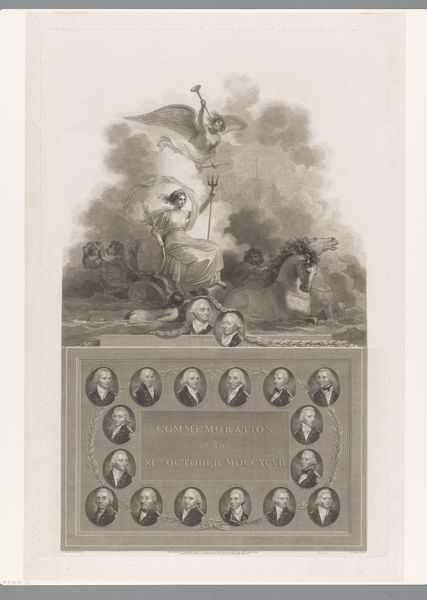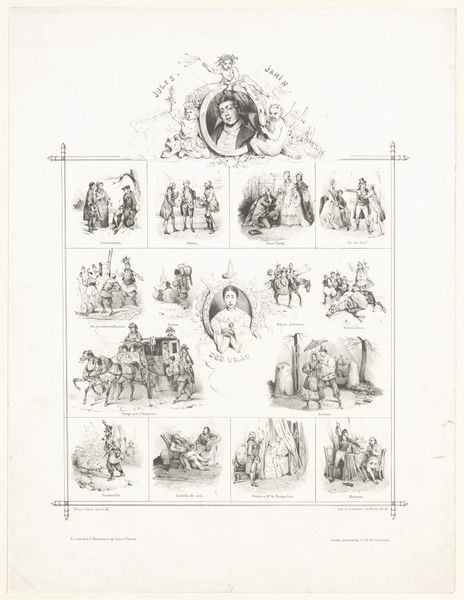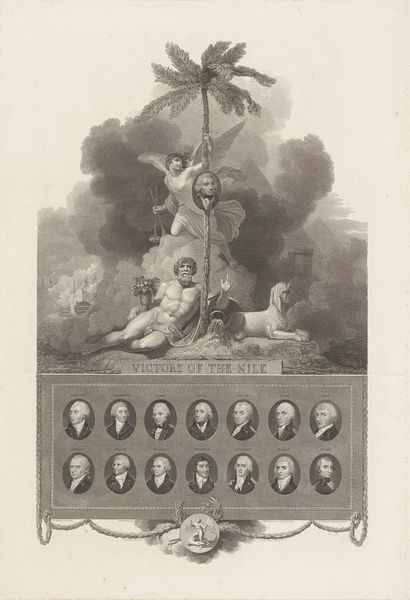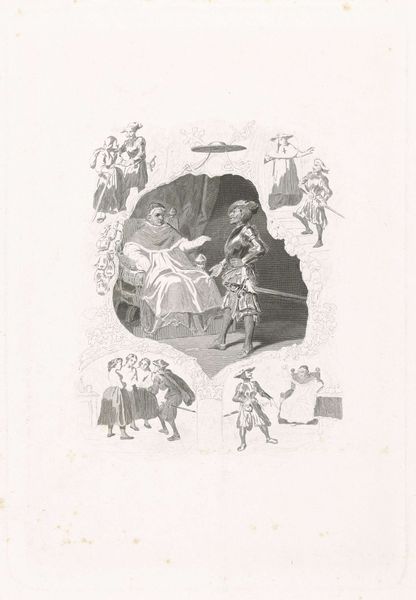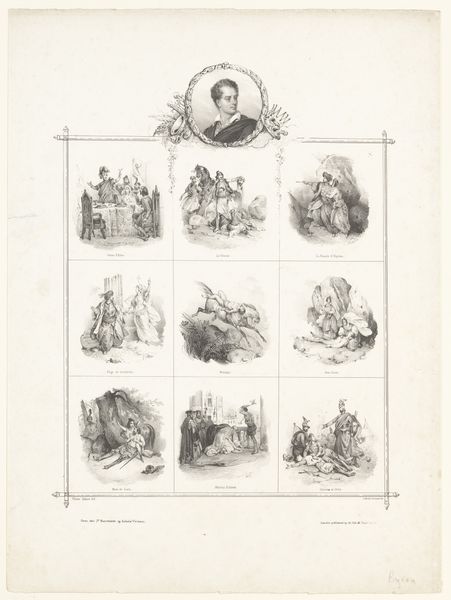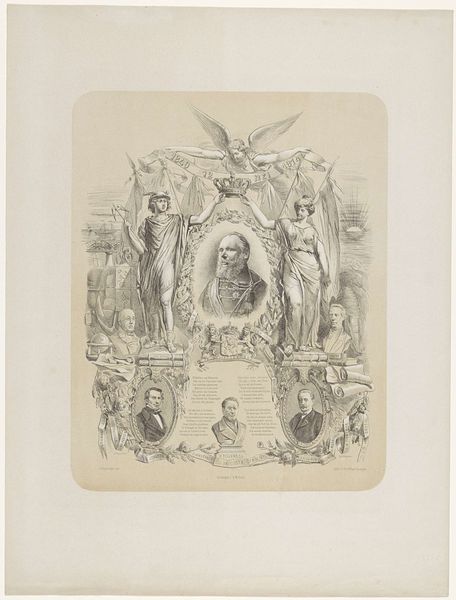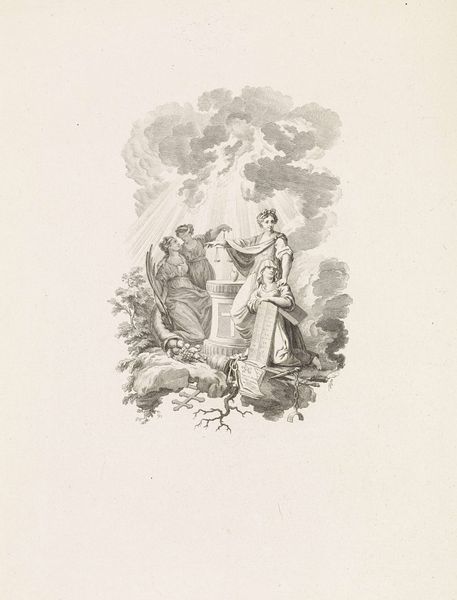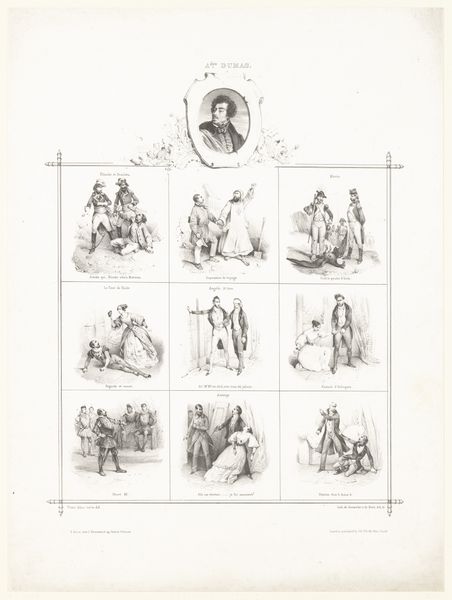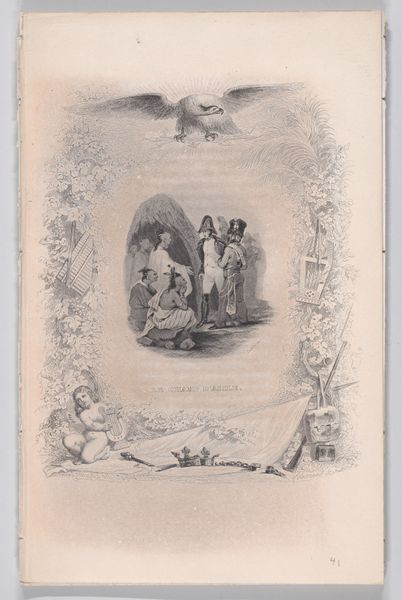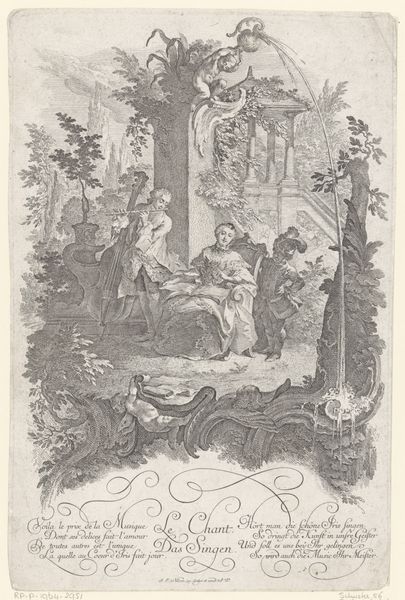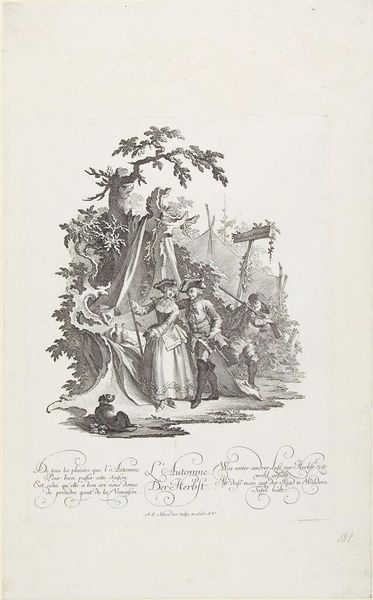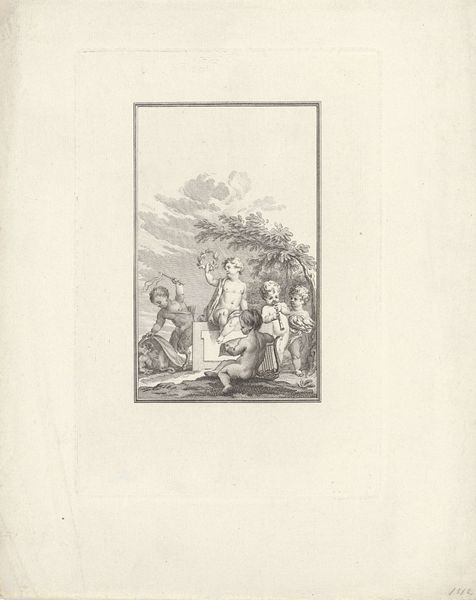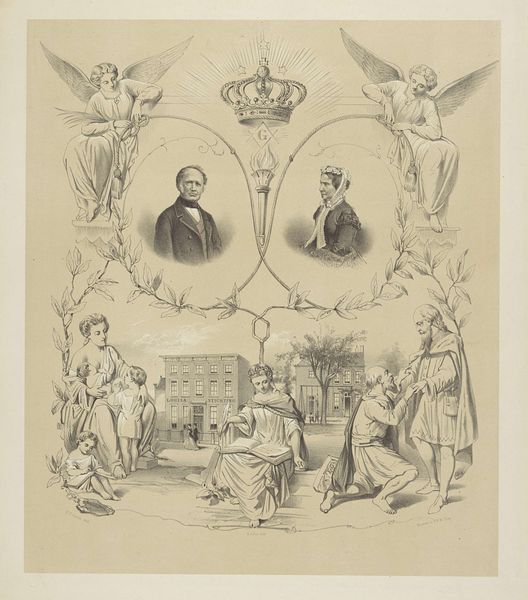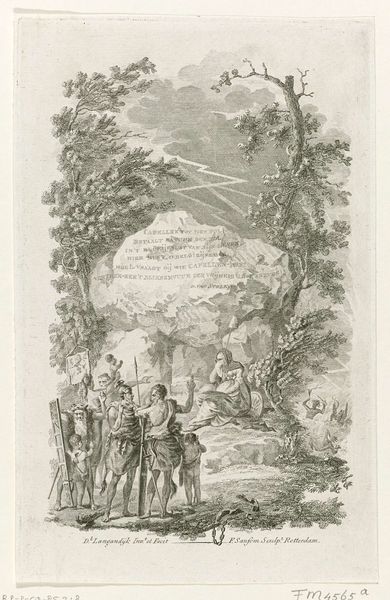
print, etching, engraving
#
portrait
#
neoclacissism
#
allegory
# print
#
etching
#
old engraving style
#
history-painting
#
engraving
Dimensions: height 802 mm, width 425 mm
Copyright: Rijks Museum: Open Domain
Editor: Here we have "Herdenking van een overwinning op 1 juni 1794," an engraving and etching created in 1802 by Francesco Bartolozzi. At first glance, I’m struck by its hierarchical composition, the way the portraits at the bottom give way to this allegorical scene above. What stands out to you? Curator: The visual organization indeed demands our attention. The clear division between the earthly portraits and the allegorical scene allows for a reading predicated on symbolic interpretation. Notice how the sharp lines defining the portrait ovals contrast with the soft, ethereal lines used for the winged figure and Britannia. It compels a specific reading: mortal men below and the divine bestowing recognition upon them. Editor: So the contrast in line work is not just stylistic, but carries symbolic weight? Curator: Precisely. Furthermore, examine the density of figures and forms. The clustering of portraits suggests a collective body, a council perhaps, while the upper register features a select few – figures elevated to a higher symbolic status through their visual separation. Also, the portraits could stand in for their status by birth while Britannia represents something granted due to military or political success. Do you think that's too far of a leap? Editor: No, not at all, especially with the angel figure bestowing a laurel wreath. The arrangement almost feels like a family tree combined with a political statement. It’s all very calculated. Curator: Precisely. And that calculation—the meticulous arrangement of forms to convey a specific narrative and power dynamic—is the essence of its formal strength. It directs us, guiding our interpretation through its very structure. The artist skillfully manipulates these formal elements to underscore the ideological message embedded within. Editor: It’s fascinating how just by paying attention to line, shape and composition, we can start to unpack these deeper layers of meaning. I'll definitely look closer at the formal relationships within artworks moving forward. Curator: Indeed. Paying attention to form offers new lenses for critical exploration.
Comments
No comments
Be the first to comment and join the conversation on the ultimate creative platform.
